The printing press is a mechanical device that allows the mass production of printed matter by applying pressure onto an inked surface and transferring the ink onto another material.
The invention of the printing press is considered one of the most influential events of the second millennium and has had a significant impact on the modern printing we see today.
Woodblock Printing
The printing process can be traced back as far as Ancient China, where the earliest kind, Woodblock Printing, was developed around 200AD.
Woodblock’ involves carving a design into a block of wood and then applying ink to the raised part of the material. Paper is placed on top of the block and the ink gets transferred by applying pressure on the back of the paper to print the image.
The ability to print using woodblocks was revolutionary, allowing people to replicate designs quickly but also accurately and efficiently.
Its rise eventually led to books being printed using the method, ‘The Diamond Sutra’ is the oldest known printed text created using the method and is said to have emerged around 868AD.
Around this time the printing of book-formatted texts began to steadily replace the early rolled-up scrolls with Woodblock Printing gaining more prominence across Korea and Japan, as well as leading to the development of metal block printing.
Despite the popularity of Woodblock Printing in Asia however it wouldn’t catch on in Europe until the 1400s.
Movable Type and Woodtype Printing
Around 1041 Bi Sheng, an engineer from the Chinese Song Dynasty, invented a new form of printing called Movable Type. Though Movable Type is similar to Woodblock Printing the technique was created solely for printing script.
Movable Type replaced panels of printing blocks with individual letters that can be moved and reused. The first tiles to be used to create the printed letters were carved into clay and baked into blocks which would then be arranged onto an iron frame which was pressed against an iron plate. The tiles used for Movable Type would later be made from wood and then metal.
While metal soon became the go to material for Movable Type printing, Woodtype Printing eventually returned and was further developed in 1297.
Wang Zhen, another Chinese engineer from the Yuan Dynasty, created a revolving table that typesetters could use to organise their printing blocks more efficiently, allowing Woodtype Printing to grow popular once more in China.
The Gutenberg Printing Press
Although in China Wang Chen’s invention led to the printing process becoming more effective, there was no such invention in Europe until 150 years later.
Johannes Gutenberg worked as a printer and publisher during the 15th Century and is credited as having started the Printing Revolution in Europe.
After leaving Germany due to political exile, he later began to experiment with printing in Strasbourg, France in 1440.
Over the course of 10 years, he created what became known as the Gutenberg Press; he replaced wooden printing blocks with ones made of metal for each individual letter, creating the European version of Movable Type, and combining the parts into one machine that was operable by hand.
In addition to his success inventing the first Printing Press, Gutenberg also created his own ink that could be used with metal instead of wood as well as devising a more efficient method for flattening printing paper using a winepress, which would later be added to his Printing Press design.
The creation of the Gutenberg Press led to printed materials being produced far more efficiently and at greater speed. Printed texts became more readily available to the general public as opposed to being exclusive to the upper classes, leading to a higher literacy rate among the poor.
From humble beginnings the printing press has come a long way. See just how far by exploring our industry leading machinery.
To find out more about the range of specialist print services available at Evans Graphics visit our website or contact us today.


